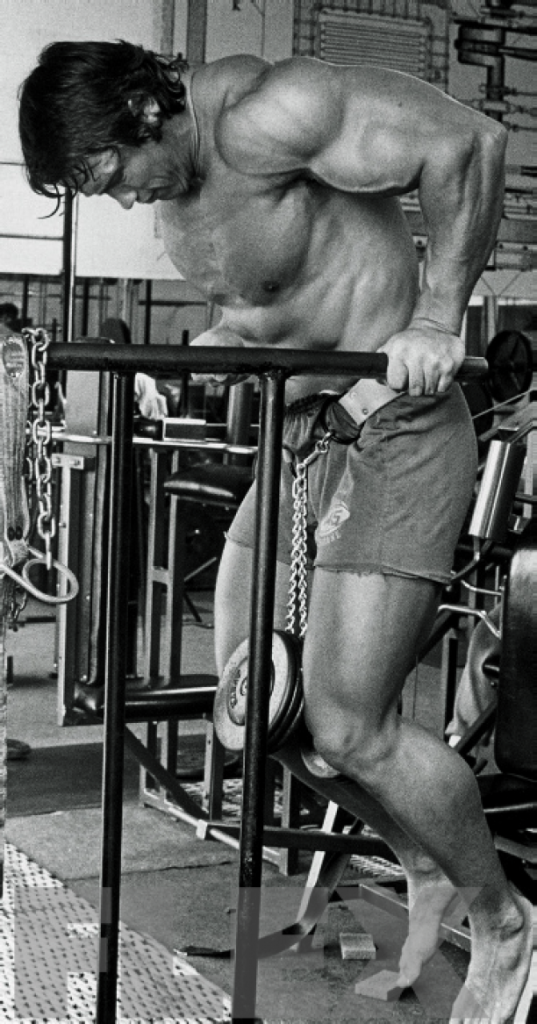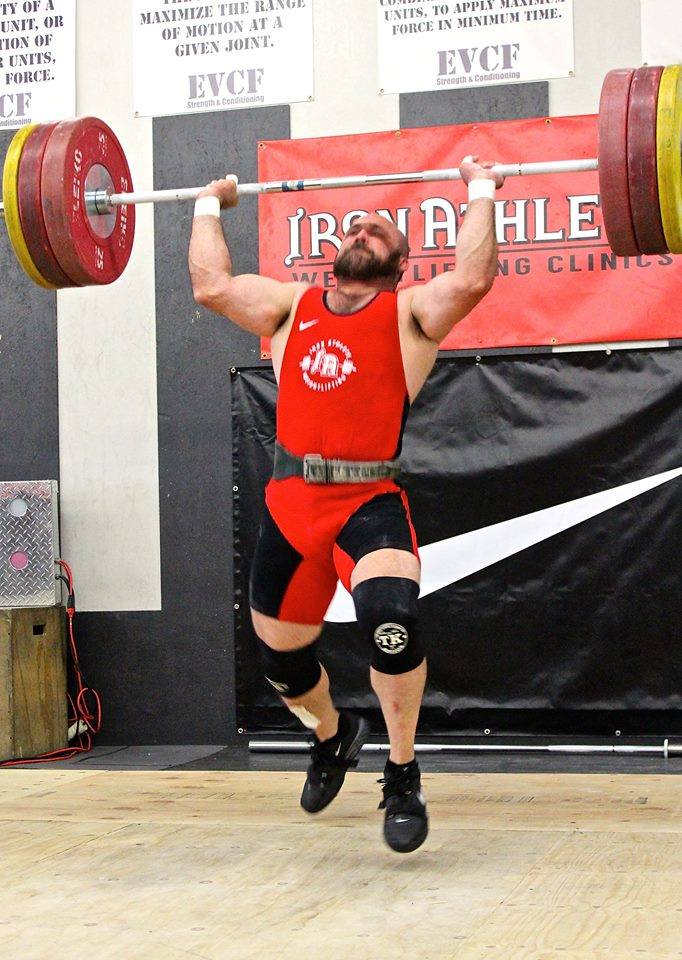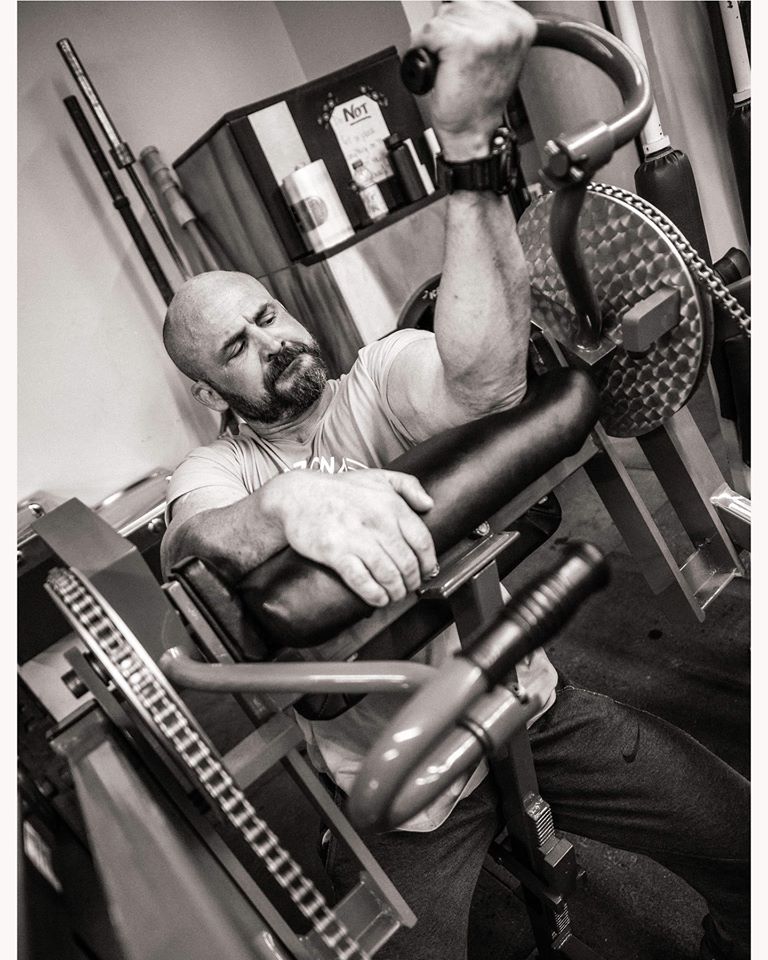In the most basic terms, Hypertrophy refers to an increase in the size of a…

Weighted Pull-up & Weighted Dip Workouts
Weighted Pull-ups and Weighted Dip are arguably the most effective exercises for developing functional upper body strength. The following is a brief explanation of several training methods that can be applied to Weighted Pull-ups and Weighted Dips.
“Four Week Progressive Overload”
This program is designed to prepare the trainee for a 1RM (1 Rep Max). This workout is completed once a week. A second upper body training session is completed on the third or fourth day following this workout (for example, Monday/Thursday). The second upper body workout of the week should include, pull-ups and dips using only body weight.
The Details:
-Work is completed in a “Superset” format. This means that exercises for opposing muscle groups are completed in
succession, with no rest.
-Loading can be structured as either “across” (same load for all sets) or “ascending” (increase load each set).
-Load is increased weekly.
Week 1
5 rounds for load:
5 Weighted Chin-up
5 Weighted Dip
(rest 1:30 between rounds)
Week 2
5 rounds for load:
3 Weighted Chin-up
3 Weighted Dip
(rest 1:30 between rounds)
Week 3
5 rounds for load:
2 Weighted Chin-up
2 Weighted Dip
(rest 1:30 between rounds)
Week 4
Build to a 1RM:
1 Weighted Chin-up
1 Weighted Dip
(make consistent increases)
(rest as needed between rounds)
_____________________________________________
“Density”
Focus on maintaining proper technique during these sets. The workout is scored based on how long it takes to complete the work. It is acceptable to alternate between exercises and divide reps any way you like. This is an effective method of training muscular endurance and hypertrophy.
For time:
30 Weighted Chin-up at 50% of 1RM
30 Weighted Dip at 50% of 1RM
(partition as needed)
_______________________________________________
“Eccentric Only”
Eccentric training can be very taxing on the body. This is due to the muscle’s ability to handle heavier loads during the eccentric phase of a movement vs the concentric phase. Increased soreness and fatigue are also a byproduct of the physiology involved in the controlled lengthening of a muscle. Eccentric training can be very helpful when training for strength or hypertrophy.
The Details:
-Only complete the eccentric phase (negative) of the movement.
-Use a step to allow for starting at the top position of each movement.
-It is not unusual to be able to complete a negative rep wit 120-140% of 1RM.
For load:
Every 1:00 for 10:00
Odd min: :08 Eccentric Chin-up
Even min: :08 Eccentric Dip
(make consistent increases)
_____________________________________________
“Potentiation”
The potentiation method can be illustrated by thinking of a time when you have picked up an empty cup that you expected to be full. The cup flies up much faster than expected. This is because your brain overcompensated and sent a stronger than necessary signal to your muscles.
Potentiation can be used to increase performance during the following set, thereby creating a more powerful stimulus. This can be useful when training for strength or hypertrophy.
To perform a potentiation set, complete a heavy single at approximately 90% of 1RM. Take a brief rest and then perform the working set. The single at 90% is intended to prime the body for a greater than usual capacity during the working set.
The potentiation effect will diminish within a few minutes of the heavy set. The optimal rest period will be long enough to allow for adequate recovery but short enough to benefit from the effect of potentiation.
Examples:
“Single Exercise”
3 rounds for load:
1 Weighted Pull-up at approximately 90% of 1RM
(rest 1:30)
6 Weighted Pull-up as heavy as possible for 6 reps
(rest 1:30)
“Two Exercises”
3 rounds for load:
1 Weighted Pull-up at approximately 90% of 1RM
(rest 1:30)
1 Weighted Dip at approximately 90% of 1RM
(rest 1:30)
6 Weighted Pull-up as heavy as possible for 6 reps
(rest 1:30)
6 Weighted Dip as heavy as possible for 6 reps
(rest 1:30)
“Supersets”
3 rounds for load:
1 Weighted Pull-up at approximately 90% of 1RM
1 Weighted Dip at approximately 90% of 1RM
(rest 1:00)
6 Weighted Pull-up as heavy as possible for 6 reps
6 Weighted Dip as heavy as possible for 6 reps
(rest 1:30)
___________________________________________
“Tempo”
Tempo refers to the speed at which the load is lifted. Controlling the tempo can make a movement much more taxing. Reps should be decreased in order to account for this.
Controlling tempo can be particularly effective for stimulating hypertrophy and increases in strength.
Tempo is often noted in the following manner:
First number: eccentric phase
Second number: time at bottom position
Third number: concentric phase
Fourth number: time at the top position
A tempo prescription of 3121 indicates:
:03 eccentric phase
:01 pause at bottom position
:02 concentric phase
:01 pause at the top position
Example:
3 rounds for load:
3 Tempo Weighted Chin-up (3121)
3 Tempo Weighted Dip (3121)
(rest 2:00 between rounds)
______________________________________________
“Tri-Sets”
A Tri-Set indicates the combining of three exercises into one set. In many cases the exercises work protagonist muscle groups, it can however be used with antagonistic muscle groups. Tri-Sets can also incorporate pre-exhaustion, post exhaustion or pre & post-exhaustion.
Examples:
“Protagonist Tri-Set”
3 rounds for load:
4-6 Weighted Chin-up
8-12 Pullover
8-12 Seated Row
(rest 2:00 between rounds)
The following is a nearly comprehensive upper body workout. It can be completed using the same weight across all five rounds or by increasing weight, each round.
5 rounds for load:
4-6 Weighted Chin-up
8-12 Machine Pullover
4-6 Weighted Dip
(rest 1:30 between rounds)
___________________________________________
“1.5 Reps”
This method of training is effective for stimulating strength and hypertrophy. 1.5 Reps are effective for two reason, they keep the muscle under tension for a prolonged period and the allow for extra work in the weak area of a lift.
The Details:
-1.5 Dip: Start in the top position and lower all the way to the bottom position. Next, return to the midpoint of the movement, at this point, stop and return to the bottom position. Complete the rep by returning to the top position.
Click Here for a Video Example of 1.5 Dip
-1.5 Pull-up: Start with arms extended. Pull to the midpoint of the movement, at this point, return to the bottom position. Complete the rep by pulling all the way to the top position and then lowering back to the start position.
Click Here for a Video Example of 1.5 Pull-up
-The half rep can be completed at the bottom or top of the movement.
-1.5 Reps should be performed at a controlled tempo.
Example:
For load:
4-3-2-2-2
1.5 Weighted Pull-up
1.5 Weighted Dip
(rest 1:30 between rounds)
-Bachelor of Scie nce, Auburn University 1997
nce, Auburn University 1997
-Master of Education, Northern Arizona University 2005
-USA Weightlifting Club Coach 2001
-CrossFit Level 1 Instructor 2009
-USA Weightlifting National Coach 2012
-EVCF Regional Team Coach 2013, 2014, 2015, 2016, 2017,2018
-EVCF CrossFit Games Team Coach 2014
-Coach CrossFit Games Masters Athlete (Bruce Briggs) 2018
-Masters National Record Holder: Snatch 130kg & Total 287kg (105kg 40-44)
-5 x American Masters Weightlifting Champion
-5 x American Masters – Best Lifter (2 x 35-39yrs, 3 x 40-44yrs)
-3 x Masters Nationals Weightlifting Runner-up
-President of Arizona Weightlifting Federation – LWC 48, 2016-current


